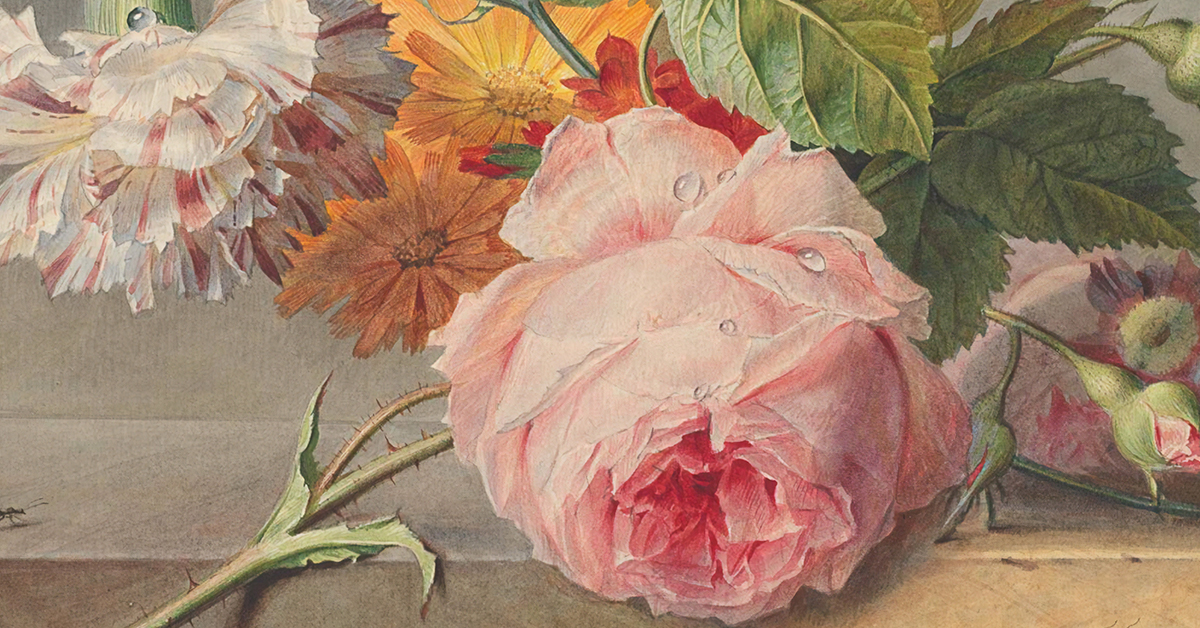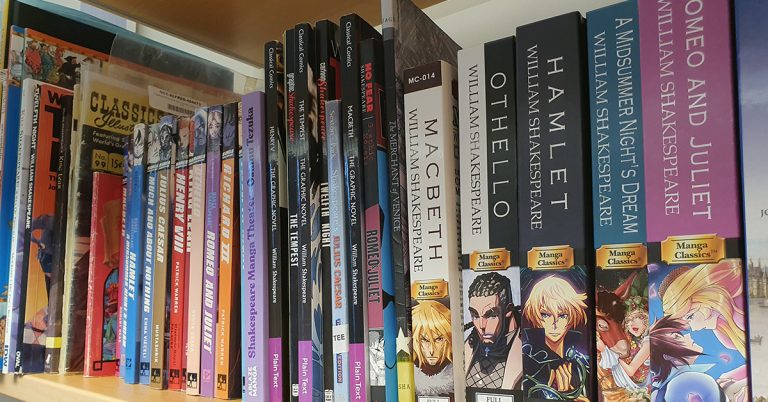
By Christopher Stokes
Skylarks, clouds, roses, rivers. What one of my undergraduate students once memorably termed the ‘flowers and s**t’ sense of Romanticism. It’s true that Romantic poetry has a narrow circuit of classic reference points, but one way to break out from odes to nightingales (and high idealism more generally) is to attend to the hugely diverse ‘occasional poetry’ of the era.
Occasional poems – technically defined as poems tied explicitly to an event or happening, and mostly marginalised in the canon – often present their readers with the quotidian, concrete and everyday. This is especially evident in poems that are symbiotic with objects announced in their titles, often sent or received as part of networks of family and friendship, or otherwise encountered as part of normal life.
There are plenty of flowers here too, of course, as well as books, jewellery, locks of hair, and other assorted objects. Conventional symbolism abounds. But here are six of the more unique objects met during my research – and what poets made of them.
1. William Wordsworth, ‘On Seeing a Needlecase in the Form of a Harp’
With ‘needles for strings in apt gradation!’, this case still exists and is part of the collections at Dove Cottage. It was made by Edith, daughter of Poet Laureate Robert Southey. Gently comic, the poem initially describes the miniscule mock lyre as an incongruous thing, an ‘unclassic profanation’ parodically juxtaposed to mythological makers like Arachne and Vulcan. Yet Wordsworth goes on to defend the finely wrought object, evoking a fantastical scene of ‘dwarf genii, moonlight-loving Fays’ who make faery music on the tiny strings. Essentially mounting a playful defence of the miniature, he concludes ardently that ‘love stoops as fondly as he soars’.
2. Amelia Opie, ‘To Mrs. Lemaistre with an Almanack, on her Birthday’
The Norfolk Quaker poet Opie penned a long sequence of birthday poems to her well-travelled friend Elizabeth Lemaistre, which together form a surprisingly complex reflection on dating, duration, and absence. An almanac, a book containing tables and calendars, is hence a strikingly apt gift. What is most interesting, however, is that the poem rejects the almanac’s external time-keeping in favour of an intimate chronology of feeling: ‘though such aid I highly rate / That aid this year I proudly scorn / Since now with smiling lip I date / From the glad hour of thy return’. In a poem all about what it means to mark a date, the time of friendship trumps calendrical time.
3. George Keate, ‘To a Lady, with a Present of Stilton Cheese’
Published in 1781 but written in 1767, this poem sets itself up against the clichés of occasional verse. A literary parody of sorts, it is humorously aware of the inappropriateness of its own gift object: ‘if some token you’d offer the Fair, you should seek / Or the Rose, or the Lily, to rival her cheek’. Keate sports with his own unromantic status as a lawyer, suggesting he has clearly not consulted ‘Cupid’s Reports, folio seventy-six’, but ends up linking cheese to goddesses via a cultured allusion to the seventeenth-century satiric drama The Rehearsal. We don’t know what the lady made of the amorous offering.
4. Anna Letitia Barbauld, ‘Sentiments, Given in Walnuts after Dinner’
Not just poetry about objects, but poetry in objects. Written in 1778 for a wedding, these epigrams (tailored to each guest) would have been written on scraps of paper tucked inside the shells, and read out loud. They express conventional blessings on matters of love, family and fortune and, as Barbauld’s modern editors note, express subtle in-jokes now lost to history. Amongst the moral messaging, the unusual medium comes through in the poem to Master P. Martineau, ‘too young to dream of Cupids darts’. As Barbauld concludes: ‘For you — I read it in your eyes / A Nut had been the richer prize’.
5. Samuel Bishop, ‘To Mrs Bishop […] with a Work-Bag of Silk and Paper’
The prolific but obscure Bishop (1731-95) wrote reams of occasional verse, not least a prodigiously inventive series of wedding anniversary gift poems. Resolutely domestic in tone and frequently self-deprecating, Bishop enjoys generating extended symbolic meanings for objects as different as china, silhouettes and spinning wheels. Here, the paper base becomes his wife’s ageing body with the silk standing for her mind: ‘it’s [sic] texture whole, it’s [sic] lustre pure’. The drawstring becomes her matriarchal command and the empty interior – many poets of this genre enjoy playing with the idea of emptiness when sending boxes and the like – the place he hopes his wife will place his own heart.
6. Percy Bysshe Shelley, ‘Letter to Maria Gisborne’
As an intimately colloquial verse epistle, this is occasional in a sense that it is not linked to an object, but worth including simply because it is one of Shelley’s most fascinating, brilliant, and uncharacteristic pieces. Opening with a profusely imaginative description of its immediate scene of writing, the Italian workshop-study of the engineer Henry Reveley, it ranges across a rich panorama of tools, instruments, papers, books, boxes, bowls and scattered detritus: ‘more knacks and quips there be that I am able / To catalogize in this verse of mine’. Famously understood as the most ethereal of Romantics, Shelley here imagines himself, as poet-creator, transformed by the presence of these objects into half-alchemist and half-engineer – a ‘weird Archimage’.
Christopher Stokes is Senior Lecturer in English Literature at the University of Exeter. He is author of Romantic Prayer: Reinventing the Poetics of Devotion, 1773-1832 (Oxford UP, 2021) and Coleridge, Language and the Sublime: From Transcendence to Finitude (Palgrave Macmillan, 2010), as well as editor of The Selected Poems of Bernard Barton (Anthem, 2020). His most recent article (Amelia Opie’s Lemaistre Sequence and the Romantic Occasional Poem) in Romanticism forms part of a research project on occasional poetry of the Romantic era.
Romanticism offers a forum for the best critical and scholarly work in Romantic studies today. The journal focuses on the literary period of 1750-1850, publishing research on critical, historical, textual and bibliographical aspects, representing a full range of current methodological and theoretical debates. Find out how to subscribe, or recommend to your library.






